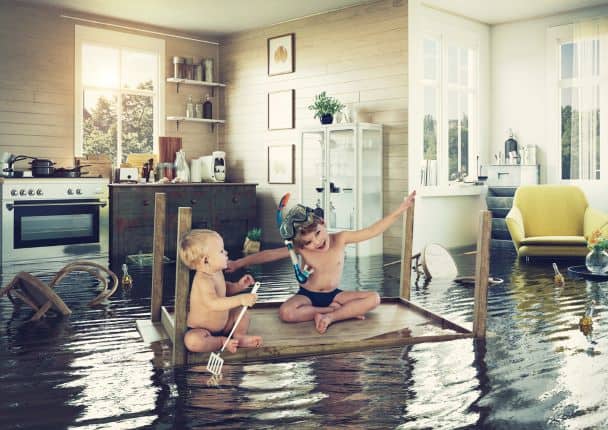Storm season is once again upon us. The peak season for floods and other weather-related damage.
Before home owners can start cleaning up after a flood, they need to know whether the home is safe. Most flood insurance policies have a provision for protection for damage to furnaces, but only if a homeowner takes certain steps before turning the power back on.
The common question is, can a furnace survive a flood?
Yes, it can. BUT…and this is a BIG BUT…It will greatly depend on your style of furnace and the level of water it was exposed too.
After a flood, homeowners need to take precautions to protect the health and safety of their family.
One of the most important things for homeowners to do is inspect the home’s furnace.
Here are 3 things to watch out for…

Should I Use My Furnace After a Flood?
First things first, DON’T try to use your furnace.
Some think that turning on the furnace to see if it runs classifies as “testing” it. That’s a bad idea. Just because it starts doesn’t mean it’s safe.
There could be multiple problems with electrical components that would allow the unit to fire but still be very dangerous.
This is especially true with new furnaces that are more complicated. This adds to the list of 2 stage furnace disadvantages that you need to consider when buying a new furnace.
Corrosion within certain components, like the gas valve, can cause them to operate at first but then stick in an open or closed position. If it sticks in an open position it could lead to a build up of gas and then an explosion.
It’s not worth the risk of damaging the equipment or yourself. The best thing to do is to shut off the power source to your home (if possible). Then call a professional that can give the furnace a thorough inspection and let you know the damage.
What To Do If Furnace Was 100% Submerged
Drop back and punt.
If you had a flooded basement and your furnace was completely submerged, sadly, nothing can save the equipment. Manufacturers will even void any warranties if the equipment has been in a flooded basement.
Keep in mind that most furnaces today are only about 36″ tall. So a basement with three foot of water means a complete loss of the furnace.
This often means replacing the air conditioning system as well. Air conditioners have an integral part sitting on top of the furnace. If that was submerged, you’ll need to replace that as well.
An HVAC system that’s experienced this kind of flood damage is a major loss.
What To Do If Furnace Was Partially Submerged
This is where things can get tricky. You’ll definitely need a qualified HVAC professional out to inspect your system and give you your choices.
As a rule of thumb, if your furnace is in the basement and you get less than 18 inches of flood water, the option to keep your furnace should be available.
But it will require replacement of ANY and ALL electrical components and safety controls that came in contact with flood waters.
In addition, any metal that came in contact with water needs to be cleaned and sanitized. This includes all components of the blower and blower wheel in the lower part of the furnace.
In some furnaces, there is also a layer of insulation on the inside of the metal cabinet. Any insulation that has water damage will need to be removed. The removal of the insulation in the bottom of the furnace will have little to no effect on its operation.
Water doesn’t only mean wet floors and walls. It also means that harmful bacteria and mold can grow and flourish in places such as your furnace. This is why a thorough cleaning is so important.
What About Other Appliances
Our focus has been on furnaces in a basement. But this information can be used for air handlers, water heaters or any appliances in a basement or utility room that have been exposed to water damage from flooding.
Keep in mind, any electrical controls exposed to flooding must be replaced. Any other working elements that the water reached must be replaced. Anything that can absorb water must be thoroughly cleaned and sanitized or it must be removed.
Conclusion
The safety of your home and family is first. Do NOT try to turn on your furnace. If you’re in this situation, call your insurance provider first. After they give you the information you need to move forward, get in touch with a professional HVAC contractor and have them give your furnace a full inspection.
